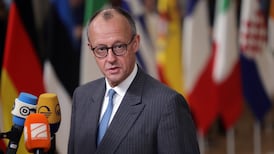Few people had heard of the nerve agent Novichok until 2018, when western officials accused Russia of having used it in the attempted assassination of former spy Sergei Skripal in Britain. It returned abruptly to the headlines on Wednesday, when Germany said the poison had sickened Russian dissident Alexei Navalny.
But for decades, scientists, spies and chemical weapons specialists have known about and feared Novichok. It is a potent neurotoxin, developed in the Soviet Union and Russia in the 1980s and 90s, that can be delivered as a liquid, powder or aerosol, and is said to be more lethal than nerve agents that are better known in the West, like VX and sarin.
The poison causes muscle spasms that can stop the heart, fluid build-up in the lungs that can also be deadly, and damage to other organs and nerve cells. Russia has produced several versions of Novichok, and it is anyone’s guess how often they have actually been used, experts say, because the resulting deaths can easily escape scrutiny, appearing like nothing more sinister than a fatal heart attack.
That may have been the plan in the case of Skripal, a former Russian spy living in Salisbury, England. When Skripal was found barely conscious in a park March 4th, 2018, there was no obvious reason to suspect poisoning – except that his daughter, who was visiting, was with him, suffering the same symptoms.
British intelligence agencies identified the toxin as Novichok and accused Russia. The attack became a major international scandal, further chilling relations between Moscow and the West. The British identified Russian agents who they said had flown into Britain, applied the toxin to the front door handle of Skripal’s house and left the country, leaving a trail of video and chemical evidence.
Moscow denials
President Vladimir Putin’s government has consistently denied any involvement in the incident, spinning a series of alternative theories, and just months before the Salisbury attack, Putin declared that Russia had destroyed all of its chemical weapons.
Skripal worked for Russian military intelligence until he was caught passing secrets to the British, and imprisoned. After he was released in a 2010 prisoner swap and settled in England, he advised several countries’ governments on Russian intelligence.
Time and time again, people seen as enemies of the Kremlin have been killed, both in Russia and abroad. Russian spies have a long history of using poisons in assassinations, and western intelligence officials say Russia has spy units specially trained in the handling and deployment of the most dangerous substances.
Skripal and his daughter, Yulia Skripal, survived the poisoning, as did a police officer who had been exposed when he visited their home to investigate and a man who had found the discarded perfume bottle used to transport the toxin. But the man's girlfriend, Dawn Sturgess, who had sprayed herself with the bottle, died.
‘New guy’
After the Soviet Union disintegrated in the early 1990s, scientists who had worked on its chemical weapons programme – some of whom moved to the United States – spoke publicly about a nerve agent they had named Novichok, Russian for "new guy". One of them accidentally exposed himself to it 1987, suffering permanent and ultimately fatal muscle and organ damage. He told his story to a Russian newspaper in 1992, shortly before he died.
Novichok belongs to a broad class of compounds called cholinesterase inhibitors, which are used in a wide range of medicines as well as poisons. They attack the normal ebb and flow of neurotransmitters, chemicals in the body that nerve cells use to regulate essential functions.
Nerve agent poisoning can be treated with the chemicals atropine and oxime, but even if the treatment is successful, victims can suffer lasting damage.
The first field use of the toxin may have been in 1995, when a Russian businessman and his secretary were killed. Officials said at the time that they had been poisoned with cadmium, a heavy metal, but Russian media have since reported that it was Novichok.
In 1999, the United States struck an agreement to help Uzbekistan dismantle a former Soviet chemical weapon lab that had produced and tested Novichok. After that, it went all but unmentioned in news reports for almost 19 years – until two Russians were found near death in a park in Salisbury. – New York Times










